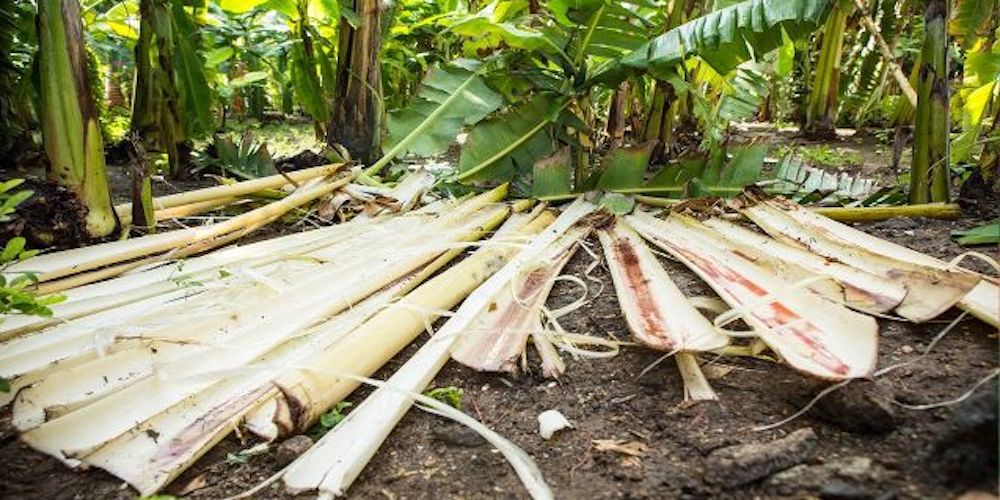Converting Agricultural Waste into an Eco-friendly Wound Dressing Material

An eco-friendly wound dressing material made using banana fibers presents a sustainable solution for wound care
Bio-composites, which can be obtained from the renewable natural resources, are fascinating materials for use as sustainable biomaterials with essential properties like biodegradable, bio-compatibility as well cyto-compatibility etc. These properties are useful for bio-medical including wound-healing applications.
India, the world’s largest banana-farming country, has an abundance of banana pseudostems, discarded after harvest. But, fibre obtained banana pseudo stem of banana plant, which is otherwise wasted, can be used as a material along with chitosan and guar gum to fabricate a banana fibre-biopolymer composite patch.
In a pioneering effort, scientists at the Institute of Advanced Study in Science and Technology (IASST), an autonomous institute under the Department of Science and Technology, have transformed banana pseudostems, often considered agricultural waste, into an eco-friendly wound dressing material.
Wound, whether a minor cut or a primary incision, is essential to pay heed to it appropriately, part of which includes wound dressing. Numerous wound dressing materials are currently available and being investigated. A desirable wound dressing material may serve various purposes, such as providing moisture and occlusion and protecting from infections and an unhealthy environment.
Recent innovation and research in developing bio-composites resulted in extensive use in various applications, from soft robotics to tissue engineering, thus providing a beautiful concept for crafting wound dressing material with tailored properties.

Led by Prof. Devasish Chowdhury and Prof. (Retd) Rajlakshmi Devi, the research team, including Mridusmita Barman, a research scholar in the IASST-Deakin University Joint PhD programme, have ingeniously combined the banana fibres with biopolymers like chitosan and guar gum to create a multifunctional patch with excellent mechanical strength and antioxidant properties.
Taking it a step further, the researchers loaded the patch with an extract from the Vitex negundo L. plant, demonstrating the capabilities of plant extract-loaded banana fibre-biopolymer composite patch in vitro drug release and as antibacterial agents. All the materials used in creating this innovative dressing material are natural and locally available, making the manufacturing process simple, cost-effective, and non-toxic.
The wound dressing material presents a sustainable solution for wound care and suggests additional uses for the abundant banana plant, which may benefit farmers and minimize environmental impact.
After all, India is one of the largest banana-farming countries in the world. It is cost-effective, eco-friendly, and would be beneficial for farmers if additional uses of banana plant are identified. With the advances in the above investigation, this discarded fibre can be utilized, which would minimize environmental problems and achieve great potential value in biomedical research.
“This investigation opens the door to a new era in wound healing, offering a low-cost, reliable, and environmentally friendly alternative that holds significant potential in biomedical research,” says Prof. Chowdhury.
The banana fiber-biopolymer composite dressing could revolutionize wound care with its broad applications and positive impact on health and the environment. Elsevier recently published this work in the International Journal of Biological Macromolecules.
The groundbreaking research has recently been published in the International Journal of Biological Macromolecules by Elsevier, further highlighting its significance in the scientific community.


